Internet of Things and its Applications
23 May 23 

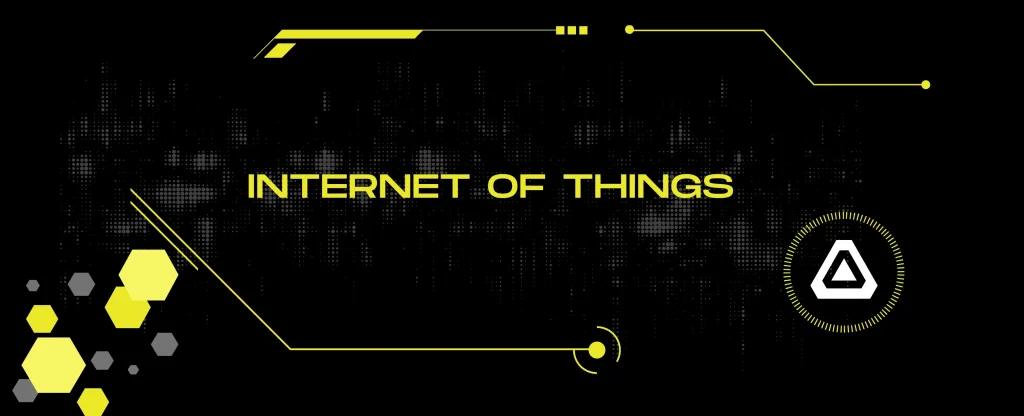
The phrase “Internet of Things (IoT)” refers to any physical object that may be linked to the internet and used to communicate and collect data. The potential to turn something as little as a chip or even a whole city into a functional IoT device is where the future of IoT resides.
The modern world has made bridging the distance between the digital and real worlds a key component. Together with developing technology, the internet is crucial to this process. In the modern era, the internet is the connecting thread between all technical equipment.
To give you a sense of what the future holds for us, here are a few illustrations of the various IoT applications that will be connected to our daily lives.
What is the Internet of Things (IoT)?
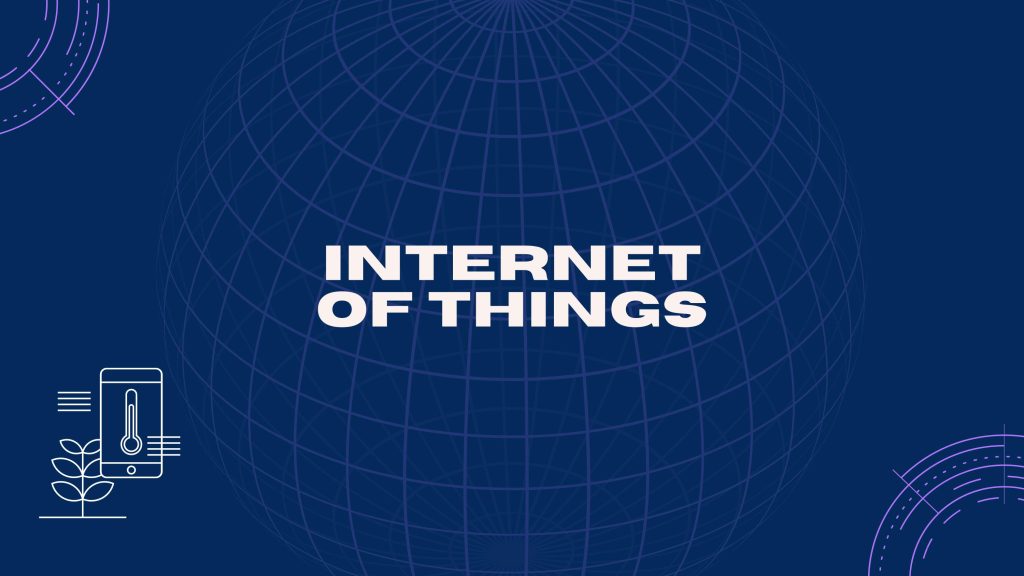
A network of devices known as the Internet of Things (IoT) enables interaction and data transfer with other smart gadgets over the internet. These physical objects are “smart” owing to the embedded sensors and software.
IoT connects commonplace utilities like household devices, safety devices, culinary gadgets, temperature controls, automobiles, baby monitors, and more via integrated unique identifiers (UIDs), enabling easy interaction among people and things.
Without requiring a computer-to-computer connection, connected gadgets communicate data via the Internet.
Importance of IoT
IoT has emerged in recent years as one of the more significant 21st-century technologies. Continuous interaction between individuals, procedures, and objects is now possible because of the ability to connect commonplace items such as household appliances, automobiles, thermostats, and baby monitors to the internet via embedded technology.
Low-cost computers, analytics, the cloud, big data, and smartphone technology enable sharing and collecting data by tangible items with minimal human involvement.
In addition, digital systems may capture, observe, and modify all interconnected communications between entities in today’s hyper-connected environment.
The virtual and real worlds collide, but they work together.
Applications of IoT
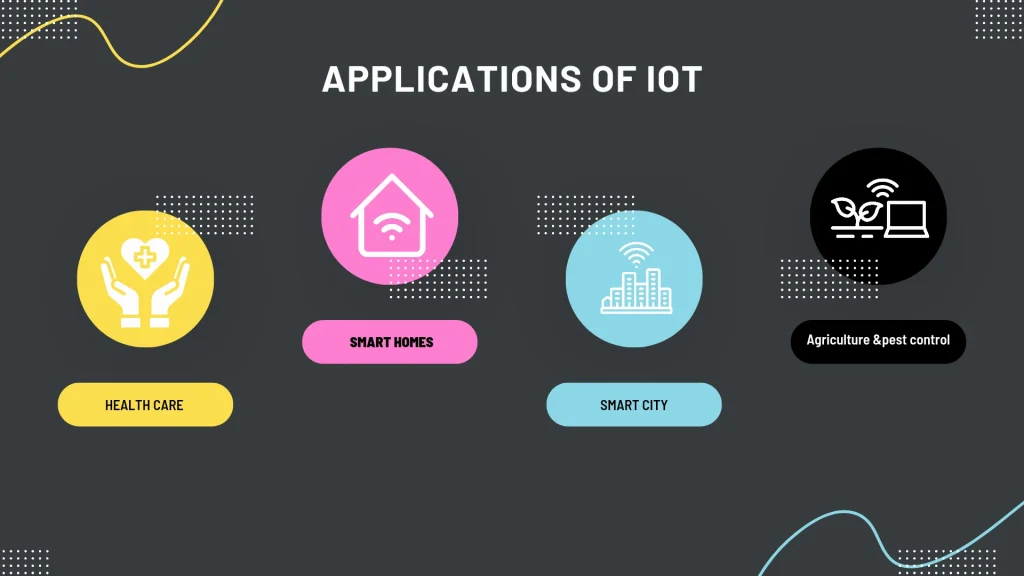
Healthcare
Utilizing its connecting technologies, the IoT interacts with healthcare. Smartwatches, fitness bands, and stress monitors are examples of IoT applications that concern the public’s well-being.
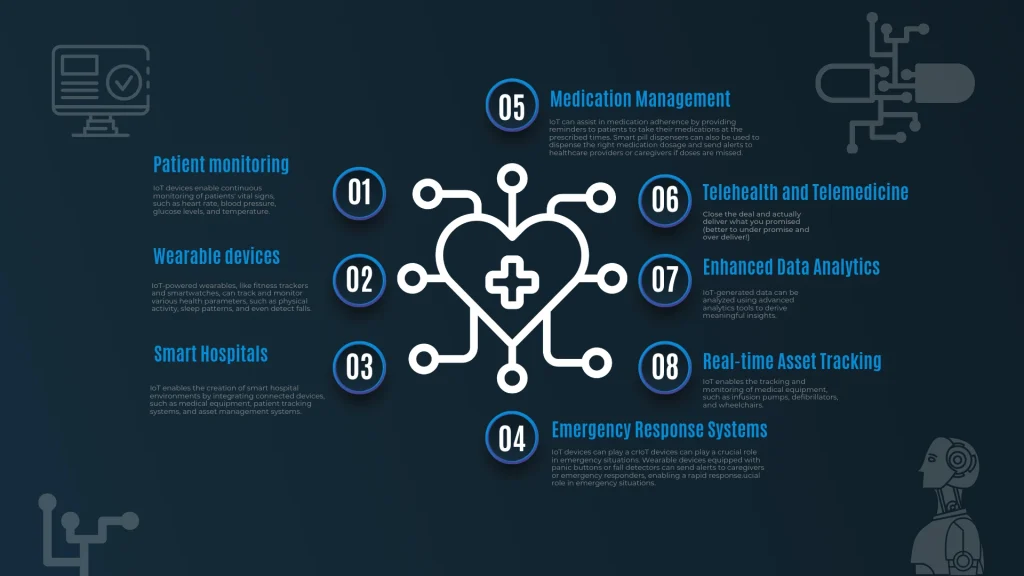
Using smart medical equipment in businesses also makes a more effective healthcare system possible. These healthcare devices provide a person with information about their health and how to improve it.
This application’s foundation is the IoT’s capacity to link devices, gather data from sensors, and analyze it to get the desired outcomes.
Smart Homes
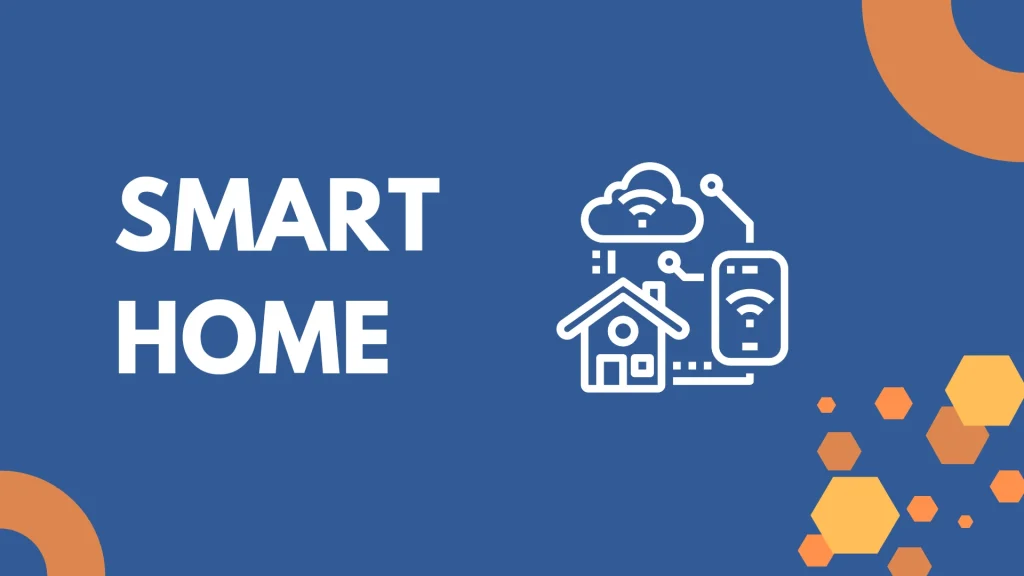
People will live their most fulfilling lives when their dwellings are in the best possible condition.
The Internet of Things (IoT) application is required to render homes more intelligent since it enables owners to manage their lighting, safety, fans, drinking water, and various other home appliances using all of their smart gadgets.
A smart home is a cutting-edge technology expertise that allows users to save time, money, and resources daily.
Smart City
As more and more households in a town become intelligent, it also impacts the city as a whole, which benefits from numerous infrastructure improvements resulting from IoT applications.
IoT is also used in transportation, government departments, traffic enforcement, medical, agricultural, water, and energy sectors, as well as the disposal of waste.

By removing individuals’ challenges, IoT promotes an environmentally friendly way of life. Using IoT, communities are also guarded and monitored for prosperity and safety.
Agriculture & Pest Control
Farmers use IoT agriculture applications to streamline several laborious agricultural procedures. For example, such applications can determine the best period to plant crops, measure soil moisture and nutritional status, and create fertilizer mixes based on soil chemistry.
In addition, to monitor the farm’s and its livestock’s health, farmers might put sensors anywhere on the property.
Indoor gardening uses IoT technologies to regulate and monitor the microclimate. This ultimately improves crop output. In addition, to measure the moisture level of the soil and its nutritional value, IoT devices are also employed for outdoor planting.
Additionally, they may monitor meteorological information to enhance irrigation and fertilizer systems. Sprinkler systems, which only release water when necessary, are among the best IoT applications for farming. It prevents water waste as a result.
Safe Driving
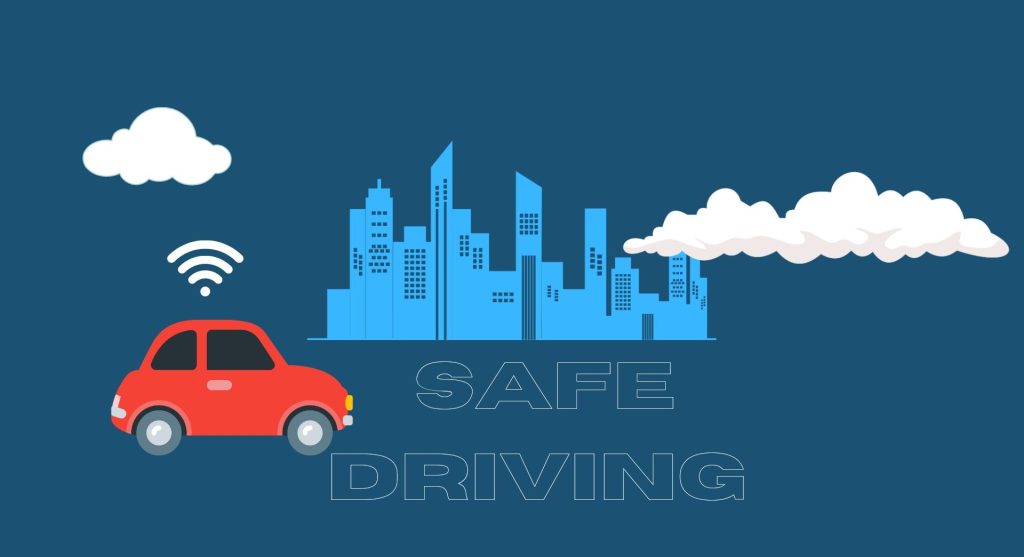
Unfortunately, the use of cell phones has increased, along with the number of crashes involving cars. Even though there have been warnings about using cell phones while driving, numerous drivers ignore them.
IoT technology makes it possible to monitor smartphone usage while driving and disable irritating apps.
IoT apps can analyze driver behaviors and provide coaching based on such actions. The development of autonomous vehicles is one current application of the IoT.
Driverless automobiles are already being developed, despite appearing to be a thing of the future. These vehicles have advanced gyroscopes and sensors, all linked to cloud services and the internet.
The driverless automobile may access data from a wide range of sources, including this platform, which informs users regarding traffic conditions, potholes, abrupt corners, speed breakers, and other helpful data needed for driving.
A smart city can significantly benefit from the addition of driverless automobiles to ensure efficient traffic flow.
Waste Management
Even if numerous companies are shifting away from non-biodegradable products, it’s crucial to handle the garbage that has already been produced. IoT has a lot to offer in terms of supporting trash management.
Choosing the best path for garbage trucks to take is one of the IoT applications. IoT applications can alert truck drivers when dustbins are full and plan a route to locate them so they don’t have to look for empty trash cans.
IoT devices can also aid in the development of “smart bins,” or garbage cans that can separate waste into different categories, including materials such as paper, metal, plastic, and glass.
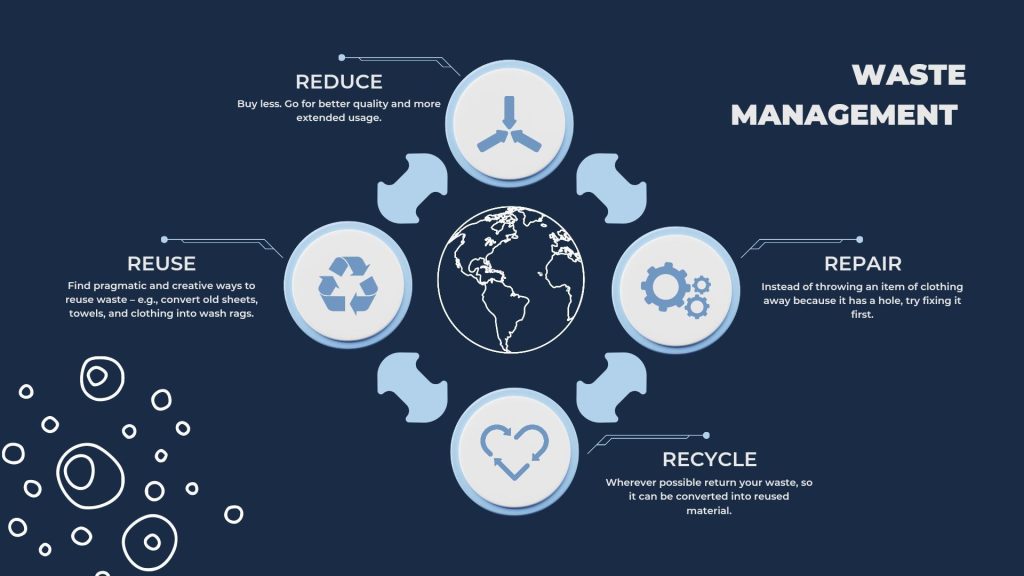
Advantages of IoT
Numerous benefits are made possible by the Internet of Things in our daily lives. The below mentioned are the few advantages of IoT:
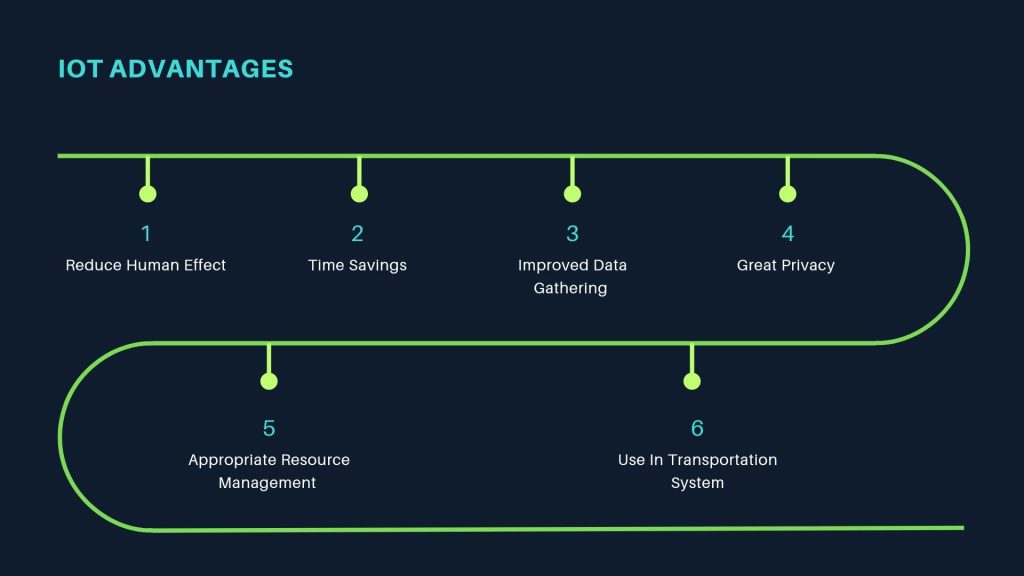
- Reduce Human Effort
As they connect and communicate with one another, IoT devices can automate tasks, improving a business’s offerings and needing less human interaction.
- Time Savings
It saves a significant amount of our time by lowering human effort. Therefore, one of the main benefits of employing the IoT platform is time savings.
- Improved Data Gathering
Information is readily available, even when we are distant from the actual position, and it is continually revised in real time. Therefore, these gadgets can access data from a variety of sources.
- Greater Privacy
A networked system can help us govern our residences and towns more intelligently via mobile devices. It provides safety for the individual and improves security.
- Appropriate Resource Management
Understanding how each device works can help us better manage resources and monitor natural resources.
- Use In Transportation Systems
With the correct tracking device and IoT technologies, tracking assets, shipments, monitoring, congestion or traffic surveillance, managing inventory, specific order tracking, and handling clients may all be done more affordably.
Disadvantages of IoT
While the Internet of Things enables benefits, it also generates many downsides. The below mentioned are the major disadvantages of IoT.
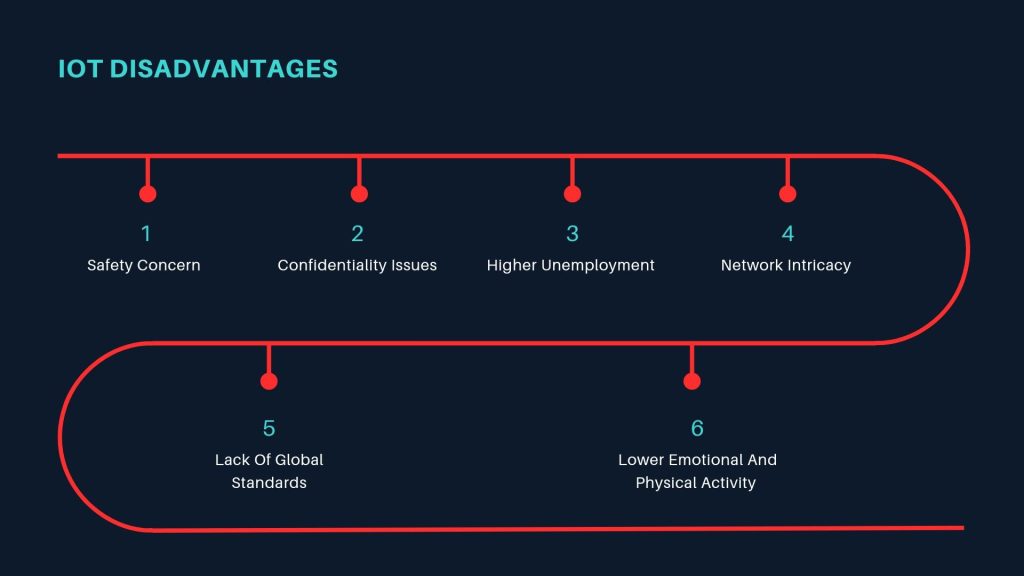
- Safety Concerns
IoT systems are networked and connected, which raises security concerns. Therefore, despite security precautions, the system offers limited control and is vulnerable to several network attacks.
- Confidentiality Issues
Despite the user’s voluntary engagement, the IoT system exposes essential private information in complete detail.
- Higher Unemployment
Growing joblessness results from the significant risk of job loss both skilled and unskilled workers face. Robots, smart ironing boards, intelligent washing machines, and other devices are taking the place of the humans who used to perform these tasks manually.
- Network Intricacy
The vast technological IoT system is complicated to conceptualize, build, manage, and enable. They rely highly on the internet and cannot function well without it.
- Lack of Global Standards
It is difficult for devices from different vendors to connect because there is no global standard for IoT interoperability.
- Lower Emotional and Physical Activity
People who consume technology and the internet excessively become passive and unproductive since they rely on their smart devices rather than working physically.
The Future of IoT
IoT platform uses AI, sensors, RFID, and communication tools to link the virtual and physical worlds. With their fantastic applications that make the daily lives of people and businesses easier, IoT devices set the standard. These IoT solutions both benefit individuals and businesses by enhancing daily activities.
Additionally, they support a more robust economy. IoT applications are so much more than just innovations in automated communication; they are also a way of life.
Future developments in digital technology are anticipated as demand for more innovative homes, cities, and retail establishments rises.
Devices will be driven by IOT applications used in daily life and AI. A strengthened economy and a fast-evolving way of life will result from this.
- Android Development3
- Artificial Intelligence24
- Classified App1
- Custom App Development2
- Digital Transformation10
- Doctor Appointment Booking App11
- Dropshipping1
- Ecommerce Apps38
- Education Apps2
- Fintech-Apps34
- Fitness App2
- Flutter3
- Flutter Apps19
- Food Delivery App5
- Grocery App Development1
- Grocery Apps3
- Health Care6
- IoT2
- Loyalty Programs8
- Microsoft1
- Mobile App Maintenance1
- Mobile Apps119
- Product Engineering3
- Progressive Web Apps1
- Saas Application2
- Shopify6
- Software Development1
- Taxi Booking Apps7
- Truck Booking App5
- UI UX Design8
- Uncategorized4
- Web App Development1









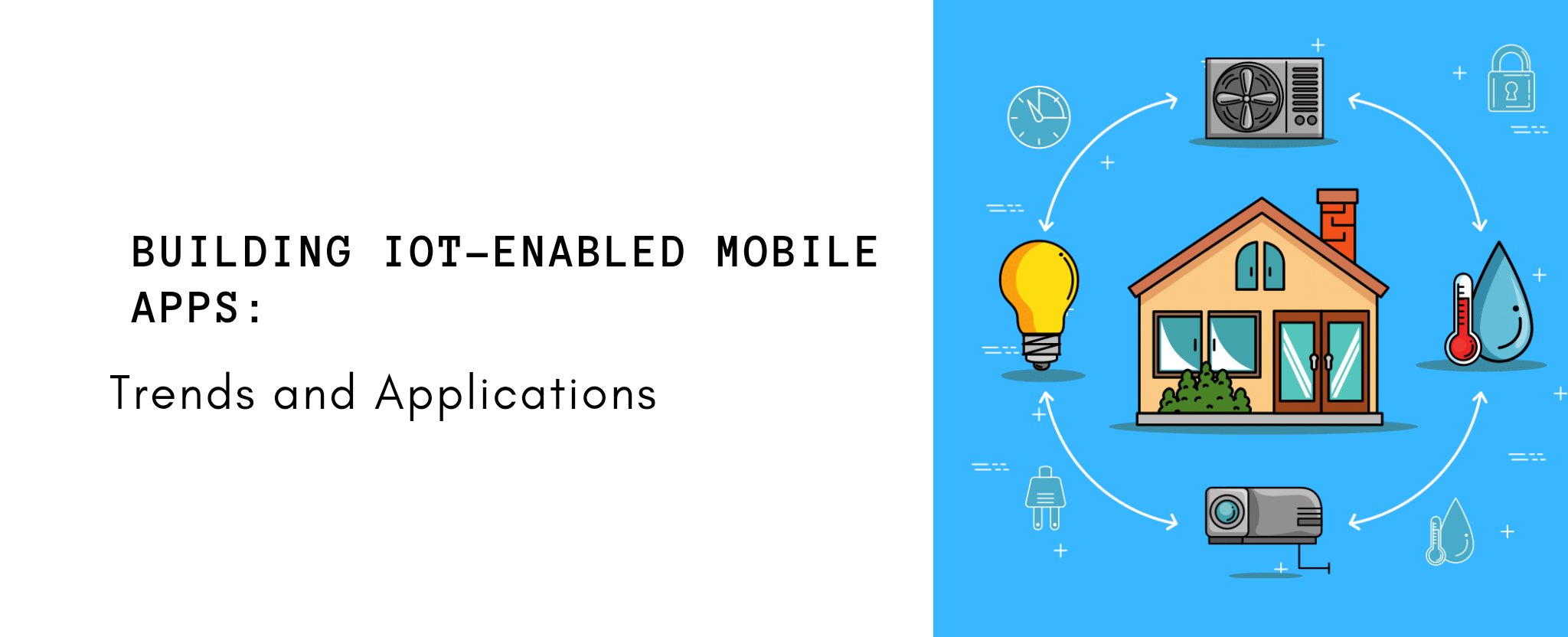






Comments